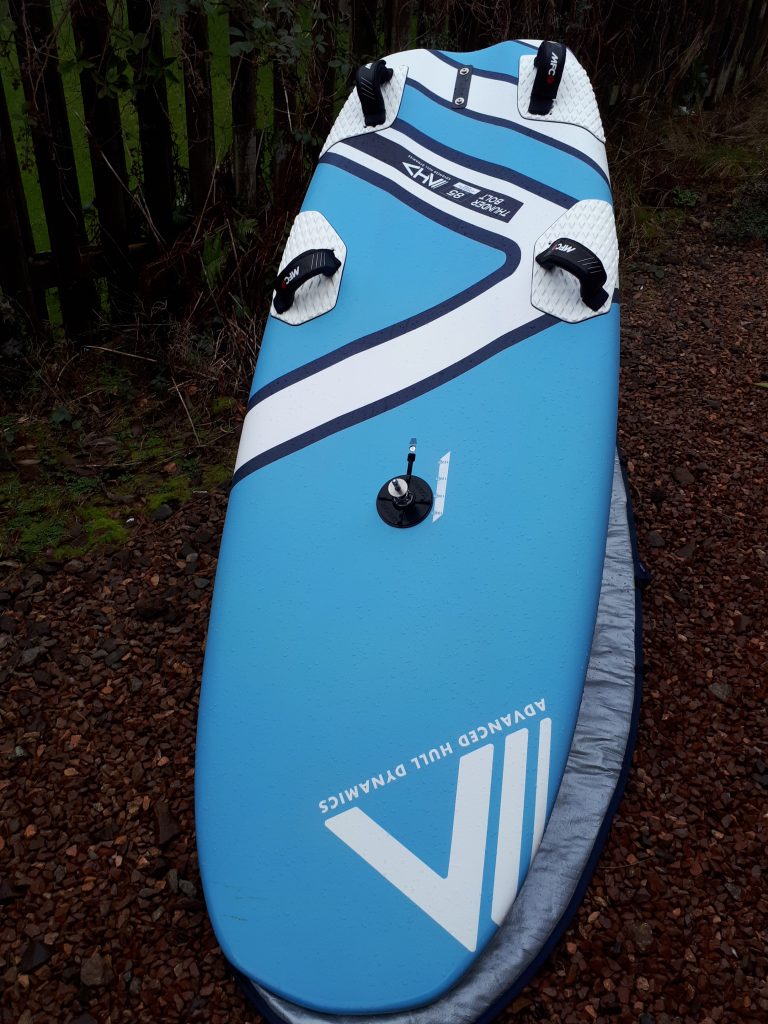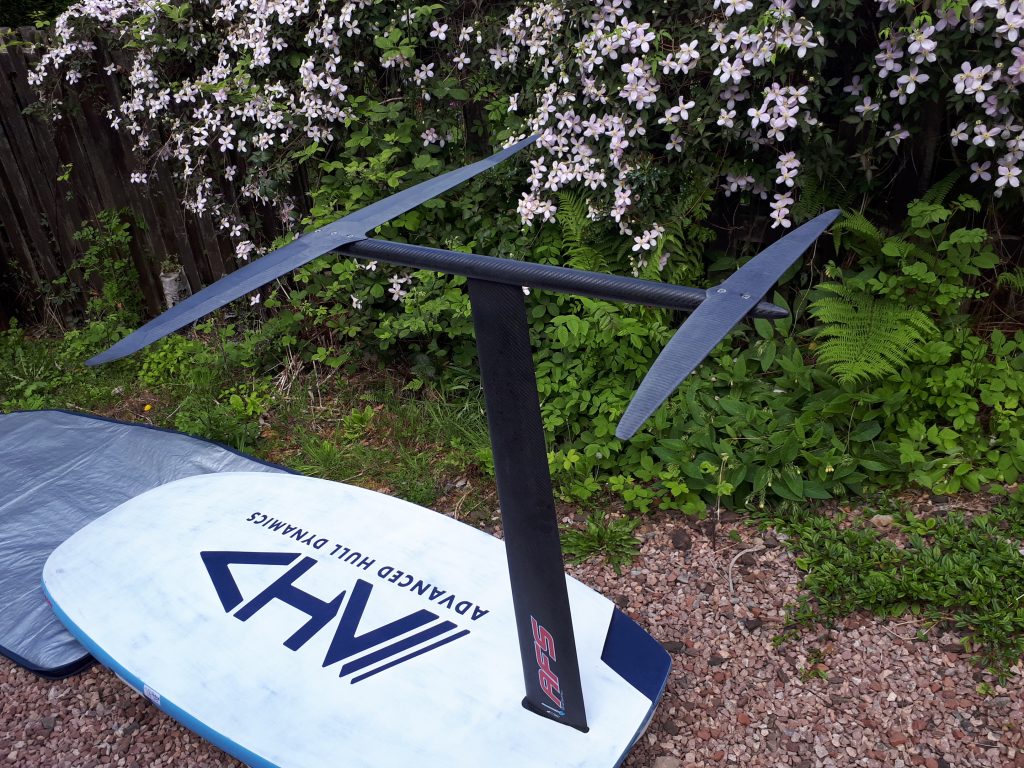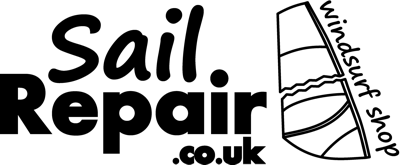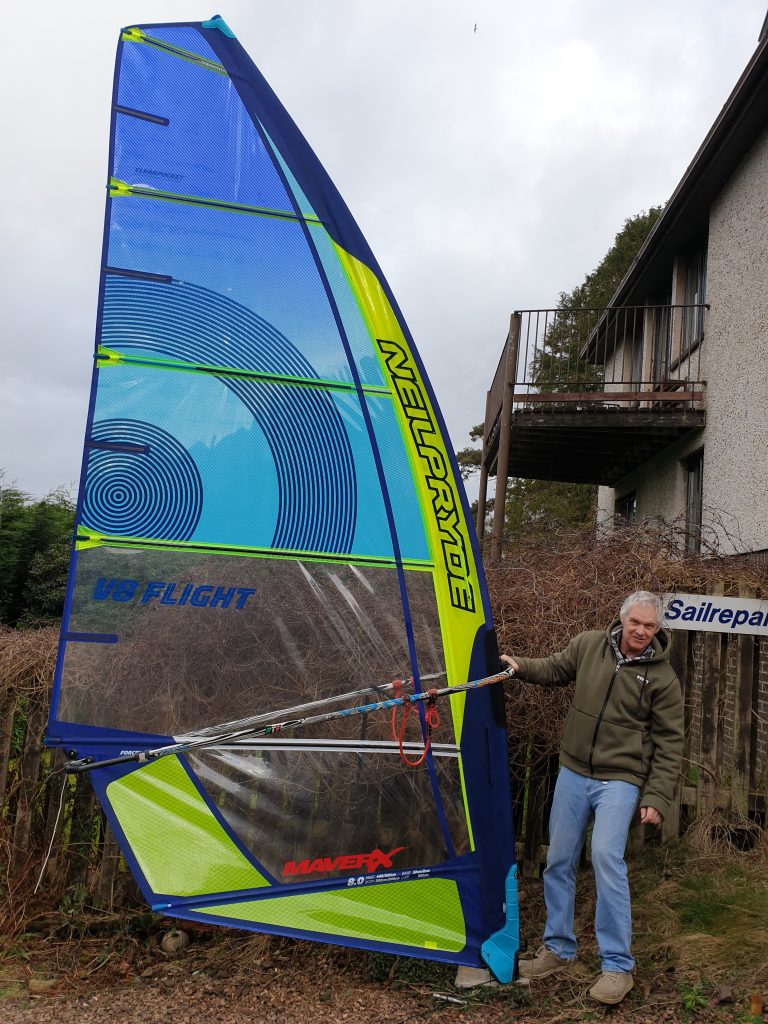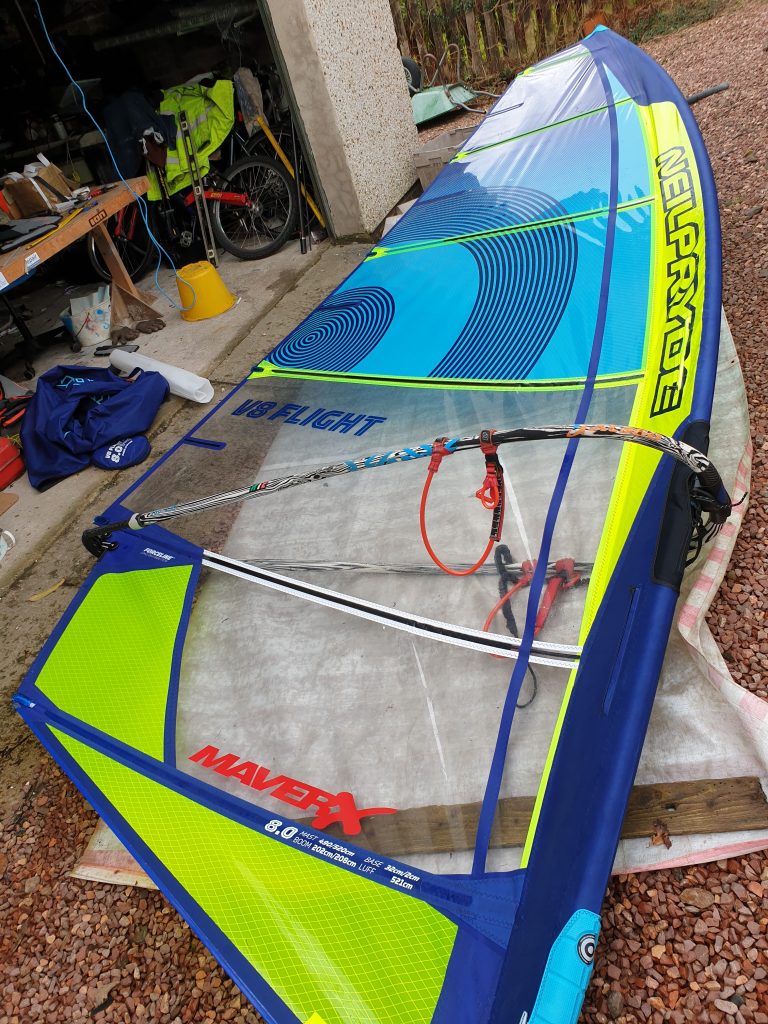AHD Thunderbolt 85
First impressions – The AHD thunderbolt range has been in production for a couple of years now and remains unchanged for 2021. AHD have a long history with foiling having been making foils and foil specific boards since as far back as 2009.
The boards have simple blue graphics and feature an unusual deep concave towards the rear of the deck. While it looks a bit strange you soon get used to it and the deck offers a large amount of “working space”. The front straps can be placed further forward than on some other brands of foil boards.
The outline of the board has quite parallel rails and a squarish nose. The moderate length of 226cm gives easy glide to get flying or for when slogging about waiting to fly. Underneath the board are some simple cutouts and a bevel to the front half of the board.
The construction is a full carbon sandwich which makes the price of £1369 very attractive however the boards are a little bit heavier than some other full carbon boards.
On the water – The thunderbolt is very stable when stationary and easy and relaxing if you find yourself floating around waiting for a gust to get you flying. The deck is comfortable and the unusual deck contours around the foil box gives you good feedback as to where your back foot is without you having to look down. The board is 145 ltrs and it will support nearly all riders and allows easy tacking.
Getting flying – The board offers a stable platform from which to pump the sail and get up to take off speed. I think the Thunderbolt will suit just about any deep tuttle wind foil be it a high aspect sporty foil or a high lift low aspect foil.
In flight – This is the Thunderbolts “strong point”, with the straps a bit further apart compared with some other boards and the front straps again further forward the Thunderbolt provides an incredibly stable platform and flies level with ease taking gusts and wind variations in its stride. Inevitable touch downs are shrugged off without issue.
Sail range? The board will take a 8.5 but you have to be in the outboard straps to be comfortable with a sail that big on long reaches. 8.0 or 7.5 are noticeably more comfortable. The board will keep its composure with sails as small as 5.0. In fact it’s top end like quite a few other foil boards is dictated by whether you can carry the board to the water’s edge. While it might sound easy, these are big boards and if you let a strong wind hit it at the wrong angle it will see you banging your foil off the ground before you know it.
Gybeing – With plenty of deck space you have plenty of “balance room” while changing feet. Should the worst happen and you over foil mid gybe and everything comes crashing down there is enough deck space to make the experience survivable. It is a big board so the gybes tendy to be steady as opposed to nimble.
Overall – A very easy board to get on with and with performance to satisfy freerace fans while having the manners to encourage people new to foiling.
